Learn how to understand color theory intuitively when you read this article on tertiary, monochromatic, and analogous colors for painting.
By Jen Evenhus
jenevenhus.com
Because I’ve been painting so long, I use color intuitively. I just “feel” my color. I choose colors automatically and know which ones harmonize or contrast with each other depending on the effect I want. I have long since stored by paint-splattered color wheel deep in a drawer in my studio, ignoring the wealth of information hidden within it. I’m sure I learned all there was to know about color in high school or college, so what is the point?
Well, you know what they say: “The more I learn, the more I realize how much I don’t know.” – Albert Einstein
That saying is more true in art that almost anything else. . .and it was true for my “technical” color knowledge! I have only a vague memory of the different terms associated with the color wheel—tertiary, split-complimentary, analogous, etc. So, because of my workshops, I offer my students different color schemes, a quick refresher course.
Color affects us is numerous ways, both mentally and physically. A strong red has been shown to raise blood pressure, while a blue has a calming effect. Being able to use colors consciously and harmoniously can help create spectacular results. I ordered a few color wheels from Amazon with all the terminology used in color theory and a smaller travel version. For those of you working in the studio or attending a workshop and find yourself without a trusty color wheel, you have countless versions online!
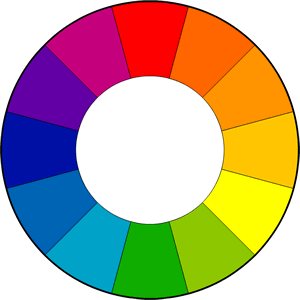
A Quick lesson on color theory
The first color scheme is Monochromatic. “Mono,” as in one. Using only one hue in different values to create a painting. We don’t often see this used, but it can be a very useful exercise to learn about values.
Analogous Colors. 7 out of 10 of my workshop students aren’t sure what analogous colors are. It’s simple really. (Analogy = Similar) Analogous colors are those colors right next to each other on the color wheel. But do you use three or five? Most of us use three and a few five. Wonderful results were had using several values of only three hues! You choose a “mother” color and then use the colors on either side of that color as supporting and accent colors.
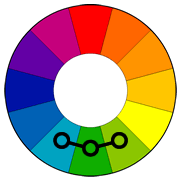 Here are a couple examples of my analogous demos from a Dakota Art Center workshop last year. I slightly cheated on the left one by working over a bright orange underpainting – orange not being within the analogous color scheme that I used. However, it works quite well given that orange has a wonderful contrast against the analogous color scheme of Purple-Blue-Green:
Here are a couple examples of my analogous demos from a Dakota Art Center workshop last year. I slightly cheated on the left one by working over a bright orange underpainting – orange not being within the analogous color scheme that I used. However, it works quite well given that orange has a wonderful contrast against the analogous color scheme of Purple-Blue-Green:
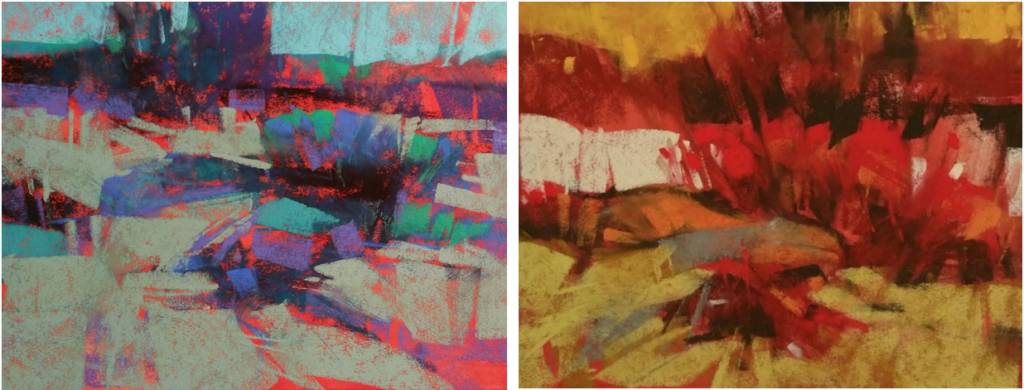 These are both 6 x 8 inches on underpainted UArt 400. They are both done from the same reference photo. You can see how using analogous colors unifies the painting. My students were very excited to “discover” and experiment with the analogous color scheme. That opened the door to even more exercises that my they were eager to try.
These are both 6 x 8 inches on underpainted UArt 400. They are both done from the same reference photo. You can see how using analogous colors unifies the painting. My students were very excited to “discover” and experiment with the analogous color scheme. That opened the door to even more exercises that my they were eager to try.
Most artists know what Complementary Colors are. That’s easy – those are colors straight across from each other on the wheel, i.e. blue-orange, red-green, purple-yellow. Using this color scheme results in very powerful paintings, lending strong contrast between the complementary colors used.
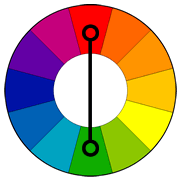 Split Complementary Color Scheme.
Split Complementary Color Scheme.
My students created some exciting pieces using this scheme. . .it’s more subtle than the straight complementary color scheme, and lends a bit more depth to the finished piece.
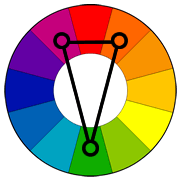 Next is the Tertiary Color Scheme.
Next is the Tertiary Color Scheme.
Tertiary colors are a combination of a secondary color and a primary color next to it. They include yellow-orange, red-orange, red-violet, blue-violet, blue-green and yellow-green. Tertiary Triad color scheme proved to be very popular, resulting in the creation of wonderful paintings.
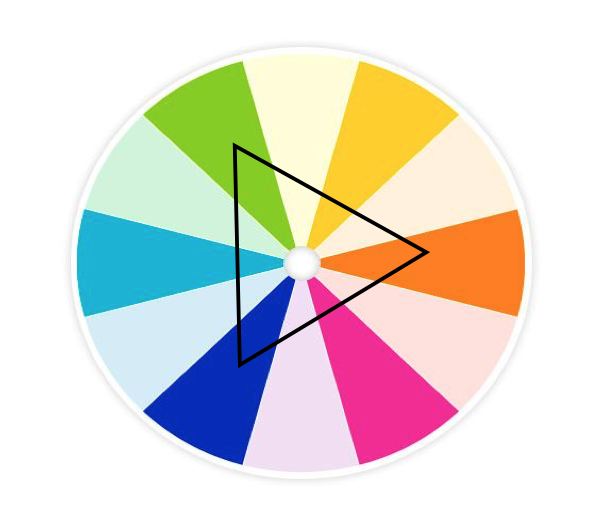 Next is the Triad Color Scheme. Above you see an example from my Triad demo in Cape Cod and another to the right. I painted this still life of pears long before I renewed my color theory – this is what I do intuitively.
Next is the Triad Color Scheme. Above you see an example from my Triad demo in Cape Cod and another to the right. I painted this still life of pears long before I renewed my color theory – this is what I do intuitively.
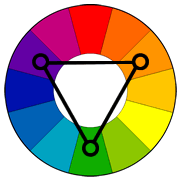
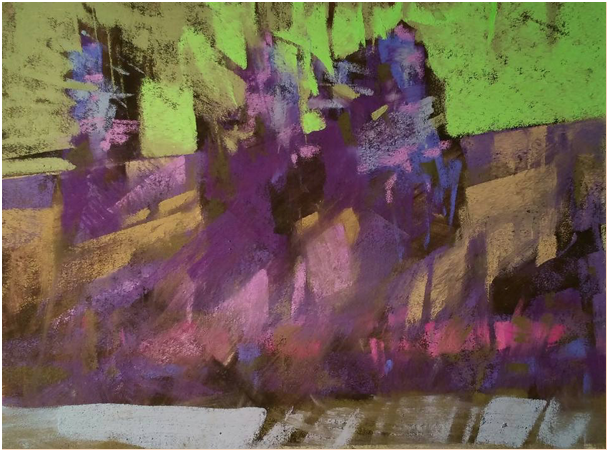 There are more color schemes – explore them all.
There are more color schemes – explore them all.
Learning color theory is invaluable to an artist. Revisiting basic color theory will reinforce your “intuitive” sense and make your work more intentional.
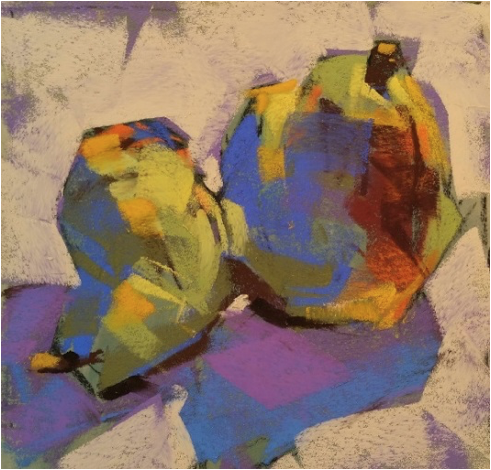 When warming up in the studio, I find it helpful to choose one of these color schemes before executing a small ten-minute study. It’s fun and you might just get a tiny masterpiece!
When warming up in the studio, I find it helpful to choose one of these color schemes before executing a small ten-minute study. It’s fun and you might just get a tiny masterpiece!
This article was originally featured in 2017 in PleinAir Today, a weekly e-newsletter from PleinAir magazine. To start receiving PleinAir Today for free, click here.
Jen Evenhus is a nationally recognized, award winning artist. Jennifer’s bold use of color is what first attracts the eye. Her subject is often paint itself, fascinated with the painterly effects one can achieve with pastels, or the wonderful transparency and opacity of oils. Whether with oils or pastels, Jennifer enjoys the process of painting as much as completing the work. Always sorry to see the journey end, Jen describes the process as a journey through unknown territory. Even though she has a good idea of the outcome she wants, she is careful not to become locked into an idea, staying open to all those little accidents that happen along the way, careful not to cover them up so the viewer might experience her travels and discoveries. These accidents she describes as unforeseen treasures that give a painting character, depth, and movement. Jennifer’s work is often very abstract, using earthscapes as a starting point, she paints out most of the detail, leaving just enough for the viewer to become lost in a new world.
> Click here to subscribe to the free newsletter, Plein Air Today
> And click here to subscribe to Plein Air Magazine so you never miss an issue!




Thanks so much for the actual examples
[…] Using color schemes that are monochromatic or analogous. […]